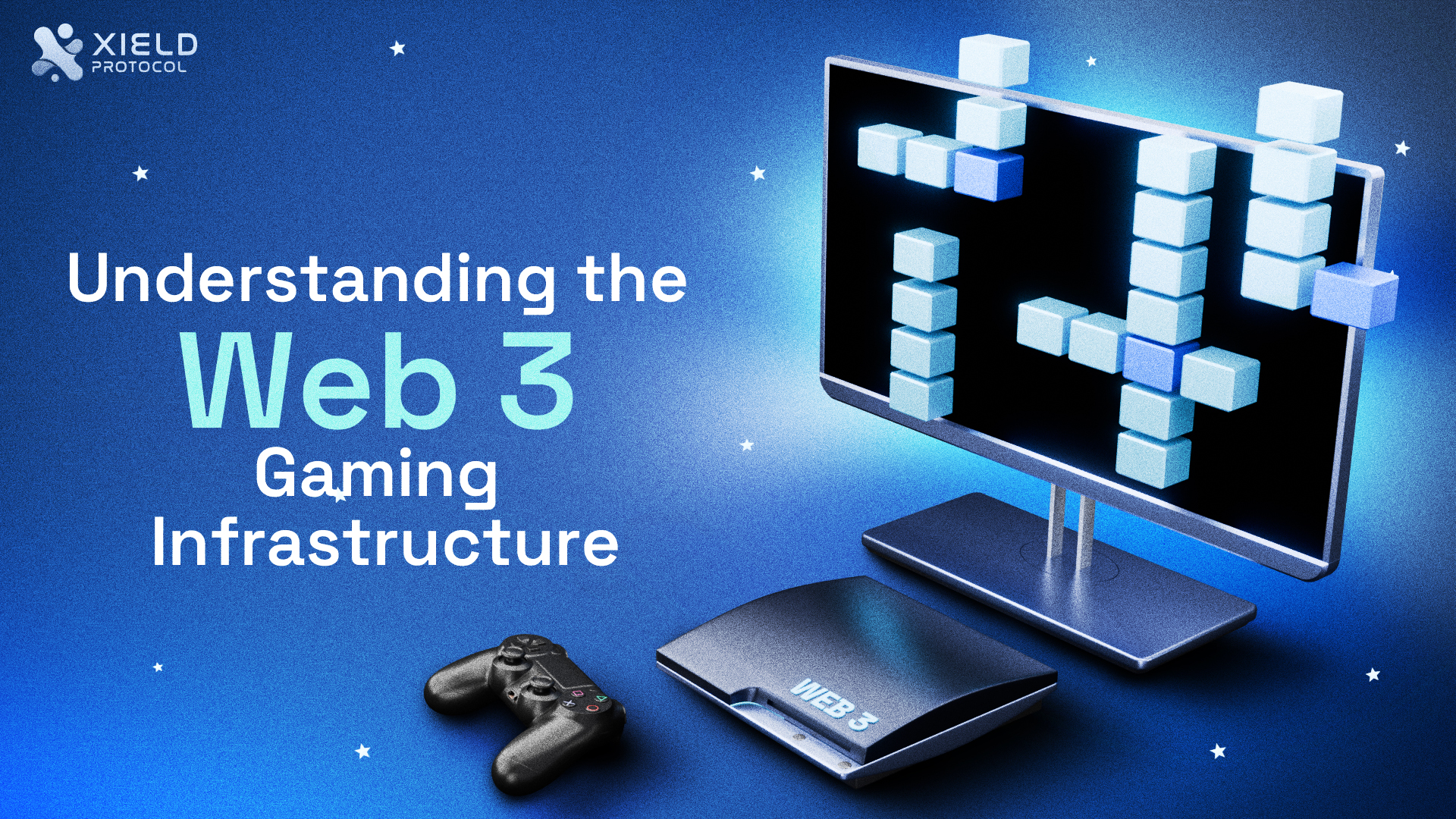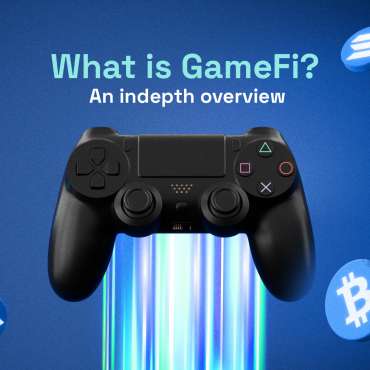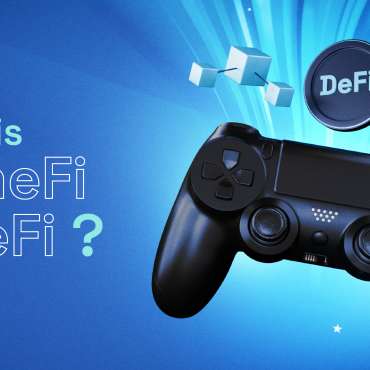In recent years, Web3 gaming has gone through a challenging but ultimately positive development. Initially spurred by the 2021 crypto bubble, the sector expanded rapidly, with several play-to-earn models developing. However, these early models were chastised for putting economic incentives over gameplay quality, prompting a significant shift in the industry’s approach.
The focus has shifted firmly from quantity to quality. According to research conducted by the gaming DAO Game7, the ratio of games published to networks created has decreased dramatically from 29 times in 2021 to 2.8 times by 2023. This is a strategy shift toward improving the infrastructure that supports Web3 games rather than simply growing the number of games.
Our blog is to give you a road map that will help you understand the subtleties of Web3 gaming infrastructure, giving you the tools you need to make educated decisions that will ensure the success and resilience of your game.
What is Web3 Gaming Infrastructure?
Web3 infrastructure is the foundation of decentralized gaming, providing a smooth integration of blockchain technology and decentralized protocols. This infrastructure opens up several potentials for gaming companies, ranging from in-game asset ownership to safe player transactions. With Web3, companies can provide users the ability to actually own, trade, and earn from in-game assets. Smart contracts, decentralized markets, and tokenized economies let game creators to construct ecosystems that compensate players for their time and work. The infrastructure also improves security by leveraging blockchain’s immutability, fostering trust in gaming and asset ownership.
What is Web3 Gaming?
Web3 gaming is a unique combination of blockchain technology, the gaming industry, smart contracts, and digital assets. Blockchain technology, which powers cryptocurrencies like Bitcoin, provides a decentralized and transparent platform for Web3 gaming. Smart contracts, which are self-executing agreements with terms put straight into code, promote fairness and security in the gaming environment. Digital assets, also known as non-fungible tokens (NFTs), enable players to claim genuine ownership of in-game things. Web3 gaming combines these elements to offer a new game experience that is decentralized, transparent, and player-centric.
Can Web2 Games Convert to Web3?
Absolutely! Web2 games can move to Web3 by incorporating blockchain layers into their current infrastructure. This move enables decentralized ownership and play-to-earn structures, allowing developers to create distinct in-game economies. Web2 games can use tokenization to convert assets into tradeable NFTs, which players can then stake or trade across platforms utilizing decentralized finance (DeFi) processes. Studios may also keep devoted players by improving ownership and income possibilities, all while retaining existing gaming features. This development creates new revenue streams for both developers and gamers, resulting in a more engaging and profitable gaming experience.
Despite the emphasis on infrastructure, there have been substantial advancements in how Web3 features are incorporated into Web2 contexts. Azarus and other platforms paved the way for this movement by incorporating blockchain-based incentive systems into traditional game streams. This dual strategy improves the viewer’s experience by incorporating interactive and reward aspects while also gradually introducing Web3 technologies to a broader audience.
Case Study: MixMob and Upland
Games like MixMob and Upland show how Web3 can be smoothly integrated into more traditional gaming experiences. MixMob enables players to utilize NFTs in-game to increase engagement without requiring blockchain understanding.
Upland builds on this by combining virtual real estate transactions with real-world involvement, making it available through traditional app stores.
These examples demonstrate that the move to Web3 may be seamless and user-friendly, stressing gradual adoption over total upheaval.
Types of Web3 Games Changing the Landscape
Web3 games are classified into numerous sorts and genres, with each delivering distinct features and gaming experiences. Web3 games that are revolutionizing the gaming environment include play-to-earn models, virtual worlds, and collection games. These games bring novel economic structures, allow actual ownership of in-game items, and offer immersive gaming experiences.
Web3 games, which include play-to-earn crypto games like Axie Infinity, virtual worlds like Decentraland, and collectible card games like Gods Unchained, are stretching the boundaries of traditional gaming and providing intriguing options for players to make real money while playing.
Play-to-earn Models: Revolutionizing Player Rewards
Play-to-earn models are changing the incentives for participants in Web3 gaming. Unlike traditional gaming models, which require players to pay to play, play-to-earn models enable users to earn real money by engaging in the game’s ecosystem. Axie Infinity, one of the most popular play-to-earn games, allows users to make money by breeding, battling, and selling Axies. Players can receive cryptocurrency or uncommon NFTs as rewards for winning battles and performing in-game activities.
This novel method of gaming encourages users to stay involved in the game, promotes strong player communities, and generates income opportunities for people all around the world. Play-to-earn models are changing gaming from a pastime to a real source of revenue, providing a new level of user involvement and financial empowerment.
Virtual Reality and Metaverses: A New Frontier
Virtual worlds and metaverses are altering Web3 game experiences. These virtual worlds, powered by blockchain technology, let users construct, own, and monetize virtual land and assets. Decentraland and The Sandbox are two examples of virtual worlds in Web3 gaming, in which users may develop and profit from their inventions in a shared metaverse. Virtual worlds and metaverses allow gamers to express themselves in ways that traditional gaming does not.
Players may explore, socialize, and engage in a variety of activities in these virtual environments, resulting in a completely realistic and dynamic gaming experience. Virtual realities and metaverses are opening up new possibilities in gaming by allowing users to construct their own digital experience and be part of a vibrant and interconnected gaming community.
Collectible and Strategy Games Based on Blockchain
Web3 gaming has given rise to collectible and strategic games based on blockchain technology. These games combine classic game principles with blockchain advantages, including genuine ownership of in-game assets and decentralized economies. NFTs are used in collectible games such as Gods Unchained and card games like Splinterlands to represent unique cards, which players may buy, trade, and employ in strategic fights. These games offer a new market for digital collectibles, allowing players to acquire and sell valuable goods.
CryptoBlades, a strategy game, uses blockchain technology to allow players to create and outfit characters, with prizes for winning fights and selling in-game things. Collectible and strategic games built on blockchain give players a new degree of ownership and engagement, offering a unique gaming experience in the digital realm.
Core Principles of Web3 Gaming Infrastructure
Ownership and Asset Control
The concept of actual ownership lies at the heart of Web3 gaming. In-game assets, commonly known as non-fungible tokens (NFTs), can be owned, purchased, and sold by players. This blockchain-based ownership model assures that gamers have verified ownership of their in-game objects, making the gaming experience both immersive and investable.
Once Vitalik Butterin, the inventor and designer of the Ethereum blockchain, claims he built Ethereum when the developers crippled his beloved World of Warcraft game character, waking him up to the horrors that centralized systems can cause.
Decentralization: New Gaming Governance
Decentralization is a key component of Web3 gaming infrastructure. Unlike traditional games, where a single corporation owns the game servers and databases, Web3 games run on a blockchain, ensuring that no one party has authority over the game environment. This design promotes fairness and paves the way for a more secure and robust gaming environment.
Transparency and Trust
The unchangeable ledger of blockchain means that all transactions and game dynamics are openly recorded, creating a transparent ecosystem in which participants can see the mechanics and transactions unfold in real-time. This kind of transparency fosters confidence between gamers and developers alike.
Interoperability Across Games
Web3 gaming allows for unprecedented interoperability in the digital environment. The blockchain’s shared data layer allows assets from one game to be utilized in another. This improves the user experience while also creating an integrated gaming ecosystem.
Monetization Opportunities for Web3 Gaming
Blockchain gaming systems provide several revenue options that were previously unavailable in traditional gaming models. Players may make real money by carefully trading their digital assets on NFT platforms. Furthermore, these platforms frequently include native cryptocurrencies that may be used within or outside of the game environment, giving an adaptable economic framework for players to monetize their digital efforts.
Web3 Gaming Infrastructure Challenges
Scalability Solutions
Scalability is one of the major difficulties for Web3 gaming. High player quantities can cause network congestion, resulting in delays and higher transaction costs. Layer-2 rollups and sidechains are being used to overcome these concerns, offering quicker transaction speeds and reduced costs while maintaining security.
Simplifying the Complexity
The complicated nature of blockchain technology raises the technical barrier to entry in Web3 gaming. Efforts are underway to simplify development processes through user-friendly SDKs and APIs that abstract some of the difficulties of building and administering blockchain-based games.
Regulatory Navigation
As Web3 gaming evolves, so will the need for clear regulatory frameworks. Developers and stakeholders are constantly communicating with regulatory organizations to guarantee a clean and consistent legal framework that promotes the growth and stability of Web3 games.
Web3 Games Today
Gaming is an important area for blockchain, frequently providing a trial ground for Web3 developments like new tokenomics or infrastructure models. Today, gaming accounts for over 30% of blockchain activity, with 2.1 million active wallets every day.
Source: DappRadar
Game developers frequently choose Ethereum layer 2 networks or layer 1s that provide high speed and cheap transaction fees, such as Solana, BNB Chain, and Near. According to DappRadar, Polygon, an Ethereum scaling solution, garnered over 1 million daily wallets in the first three months of 2024, a 429% increase from the previous quarter.
According to DappRadar, Polygon is presently the best gaming blockchain, because of its cheap fees and quick transactions, which are critical for a seamless user experience. Meanwhile, the sidechain is Ethereum-compatible, allowing it to reach a larger audience.
Polygon completed over 16 million transactions per day by the end of 2023, which was a great performance. The average cost per transaction on Polygon is often less than $0.10, as opposed to Ethereum, which has reached $30 or more.
Layer 2s like Polygon and fast layer 1 chains like Solana and Near allow game developers to focus on user experience and gameplay while potentially attaining gaming performance comparable to Web2.
The variety of infrastructure alternatives might make the Web3 gaming market appealing to investors. In the first quarter of 2024, blockchain games received about $290 million in funding. This marks a 57% decline from the previous quarter; institutional investors may be taking a wait-and-see approach in anticipation of the next major gaming trend.
Soure: Dappradar.
Closing Thoughts
While there are challenges to overcome, the prospects with web3 games are substantial. The web3 game sector, which is expected to reach $37 billion in market capitalization by 2032, offers several opportunities for both players and creators.
In-game assets may provide players with real-world value, while developers can monetize their efforts and build novel gaming experiences for a larger audience.
As more developers see blockchain’s promise and capacity to construct open economies, we expect to see more projects that use blockchain to provide unique and interesting gaming experiences.
The future of web3 gaming may be challenging, but it is also hopeful. These can open up new marketplaces, and give gamers greater choice over their gaming experiences, and engaging gaming experiences.




